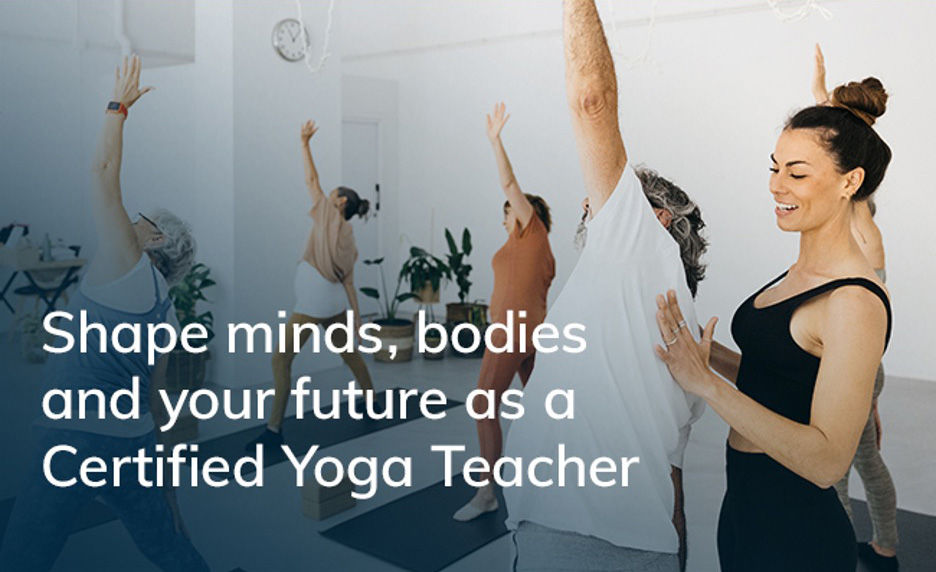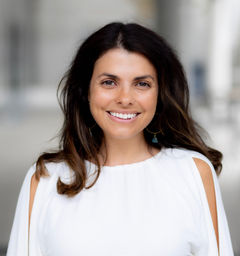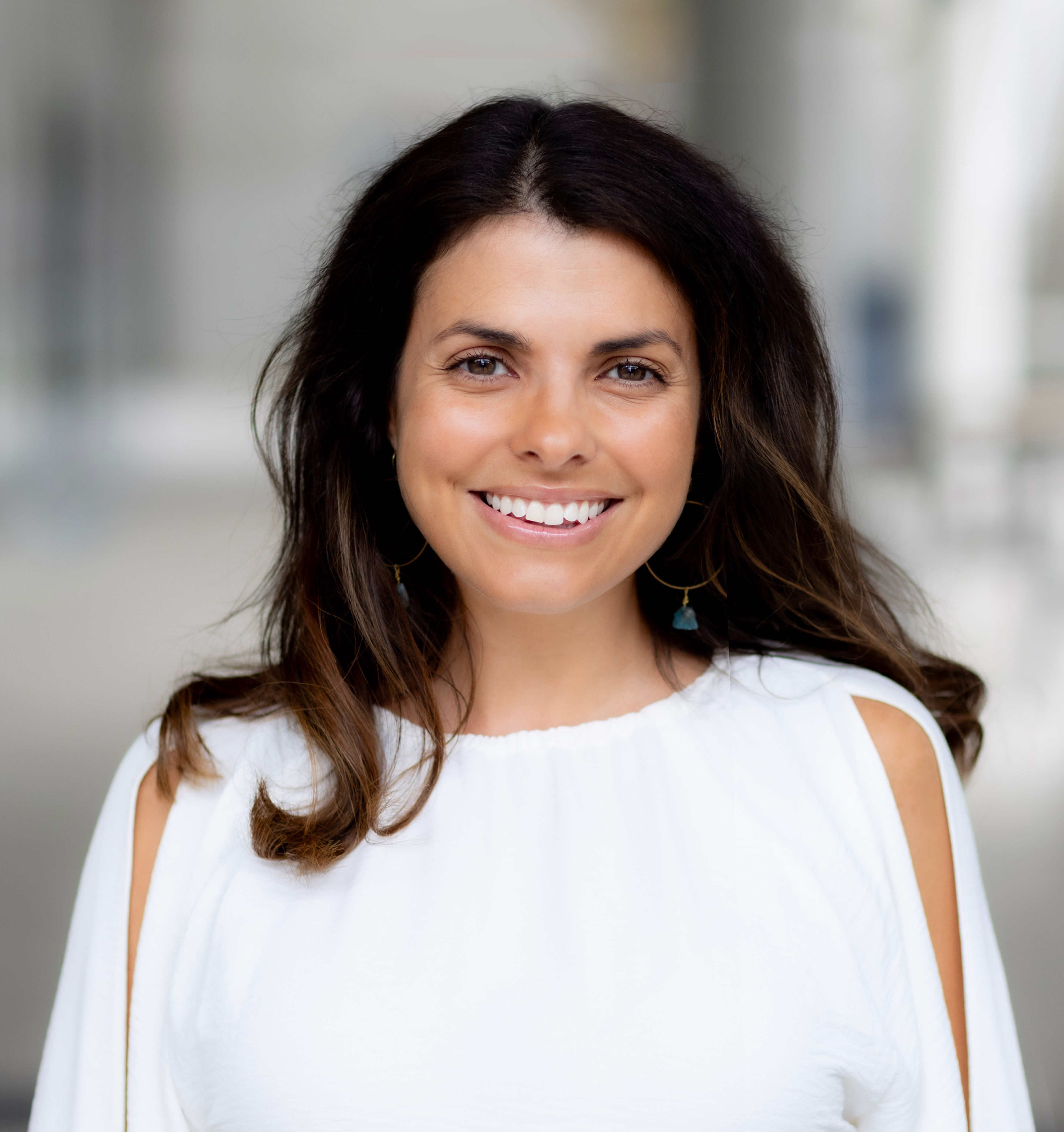
If you’re seriously considering becoming a yoga instructor, you’re not alone. Although it’s been popular in the United States for decades, more than 34 million people are estimated to participate in this ancient practice, and this number climbs higher every year. As a result, yoga teacher training programs have also grown exponentially, creating an opportunity for health and exercise professionals who want to expand their offerings by becoming a yoga instructor, but also raising concerns about the quality of the programs available.
If you’ve made it your goal to become a yoga instructor, this explosion of available training programs can make it difficult to know how to choose the highest quality program that best suits your needs and interests. Before you sign up and commit yourself to 200 or more hours of instruction, read on to learn about what you should consider prior to choosing a program. From knowing your “why” to investigating your options, this article takes you through the step-by-step process to discovering the best program for you.
The Art and Science of Living
The practice of yoga is far more than the assortment of physical movements performed on the mat. In the words of Indra Devi, the first female student of Tirumalai Krishnmacharya who is credited with bringing yoga to the west in 1947, “Yoga is the art and science of living.” This powerful statement is a testament to the profound teachings of this transformative practice, one which has touched the lives of countless people around the world for thousands of years.
While many people are drawn to the benefits that the physical practice of poses provides, such as increased strength and improved flexibility and balance, the multidimensional aspects of yoga, as outlined in the eightfold path described in the Yoga Sutras of Patanjali, offer profound emotional, mental and spiritual benefits, as well. As such, many people are drawn to practice for a wide variety of personal reasons, ranging from decreasing stress to deepening one’s own spiritual development.
Yet, there is another aspect contributing to yoga’s seismic growth and increasing popularity that warrants examination: The rapid rise in the number of yoga teacher training (YTT) programs in the U.S in recent years. Given the plethora of positive benefits and enlightening aspects of the practice it’s easy to understand why many individuals are compelled to become teachers to share the gift of yoga with others.
However, with rapid growth comes a wide range of quality, which makes choosing the right program even more important. Furthermore, before embarking down the path toward any profession, it’s important to understand the current landscape of a given field, and yoga is certainly no exception to this rule. The acknowledgment of the present state of affairs is not intended to dissuade individuals who are passionate about becoming yoga teachers from doing so. Rather, it’s simply to offer you the opportunity to thoughtfully examine current opportunities and your own motivations so that you can navigate your own personal journey with greater clarity, awareness and purposeful intention.
Exploring Your “Why”
Making the conscious decision to pursue the path of becoming a yoga teacher is not to be taken lightly. As such, it’s imperative that you start your journey with an honest reflection on your own personal intentions and motivations.
“It’s important to take the time to clearly define for yourself what it means to be a yoga teacher and why you want to become one,” says Stacy McCarthy, whose yoga journey spans more than three decades and includes studying under Sri K. Pattabhi Jois, the founder of Ashtanga Vinyasa yoga. “In an interview of more than 1,000 yoga teachers in the U.S. and Canada, the top three reasons people gave for becoming a yoga teacher included loving the practice, wanting to share the benefits of yoga with others and wanting a change in lifestyle.”
While there is certainly continual personal growth and evolution as a yoga teacher, the change in lifestyle that many people seek as a byproduct of teaching yoga is one that the late Maty Ezraty, who co-founded YogaWorks in 1987, believed should be explored and adopted beforehand as a student.
“I think you have to live the lifestyle of the yogi before you teach yoga,” argued Ezraty. “This is tricky because different people have different opinions of exactly what that means, but it involves doing a fair bit of your own personal work through yoga and other kinds of spiritual means. You really have to clean out your own closet before you consider teaching, as being a yoga teacher requires one to be emotionally strong.”
While the exact approaches to living the yogic lifestyle may be subject to debate, ranging from a certain way of eating to a certain way of living, the embodiment of the ethical guiding principles known as the yamas and niyamas should ultimately serve as the foundation from which to explore the other limbs of yoga, as outlined by Patanjali.
Yoga Alliance’s Updated Guidelines
In 2020, Yoga Alliance implemented significant changes to its guidelines for Registered Yoga Schools (RYSs), specifically for the foundational Registered Yoga School 200-hour credential (RYS 200). These changes were aimed at elevating the standards of yoga teacher training programs to ensure a consistent and high-quality level of education and safety in yoga teaching. Here is a summary of the key changes:
- Introduction of Elevated RYS 200 Standards: The new standards replaced the previous Legacy Standards to improve the quality and consistency across RYS 200 programs. This included a shift to a more competency-based approach rather than strictly counting hours, ensuring that all trainees meet a core curriculum of knowledge and skills before being certified.
- Common Core Curriculum and Competencies: A shared core curriculum was introduced, encompassing four educational categories and 12 competencies with respective sub-competencies. This curriculum is designed to cover essential aspects of yoga teaching, including techniques, training, practice, anatomy and physiology, yoga humanities and professional essentials.
- Assessment of Trainees: Yoga schools are now required to assess the knowledge, skills and experience of their trainees against this core curriculum before certifying them as 200-hour teachers. This includes practical teaching practice, as well as theoretical knowledge.
- Distance Learning Option: Reflecting the changes in educational delivery methods, especially due to the COVID-19 pandemic, up to 100% of classroom hours can now be delivered via distance learning, with a requirement that 15% of these hours be in a synchronous (real-time) format.
- Enhanced Lead Trainer Requirements: Lead trainers are now required to hold the E-RYT 500 credential and must teach at least 150 of the minimally required 200 hours of the foundational teacher training program. This ensures that trainees receive high-quality education from experienced teachers.
- Ethical Commitment and Equity in Yoga: A new ethical commitment was introduced, which includes an updated Code of Conduct, a Scope of Practice defining the role and limitations of a yoga teacher, and a commitment to equity in yoga. All RYTs must sign this commitment and complete a compulsory course on equity in yoga.
- Strengthened Application and Review Process: The application and review process for new RYS credentials was strengthened to ensure greater accountability and quality assurance. This includes a more in-depth application process and an academic-style peer review panel for evaluation.
These changes were the result of a comprehensive review process involving surveys, recommendation papers and community input, reflecting Yoga Alliance’s commitment to high-quality, safe, accessible and equitable yoga teaching. For more detailed information on these changes, you can visit the Yoga Alliance website and other resources that discuss the updated RYS 200 standards and their implications for yoga teacher training programs.
Assessing Your Personal Practice
The regular practice of asana, pranayama and meditation, as described in the eightfold path, are also integral aspects of living a yogic lifestyle, yet examining the depth and consistency of one’s personal practice is often overlooked when considering starting a YTT program.
While the experience of the teacher leading a program is an important factor, so too is the experience level of the student entering into a YTT program. You don’t want to start a 200-hour training if you have not yet learned the basics or been practicing long enough. Think of this way: It might be like trying to teach college-level math to someone who is not yet ready for college-level material—even the best teachers cannot be expected to do that.
If you are considering becoming a yoga teacher, it’s important to have developed a strong personal practice that you do primarily on your own. Having the discipline to practice yoga every day requires both maturity and focus. A quote from Pattabhi Jois, “Do your practice and all is coming,” speaks to this point, as it is through tapas—one’s own fiery discipline, drive and commitment to the practice of yoga physically, mentally and spiritually—that the true transformation of body, mind and spirit can occur.
McCarthy acknowledges that for some students the idea of starting and maintaining a self-guided practice can be challenging, just as it was for her in her early years as a student.
“At first it was a challenge to intently focus on each moment of the practice on my mat, and it was only possible to do so when I was in a class setting led by an instructor,” recalls McCarthy. “But as I became more and more committed to my own development, I realized that I was the one guiding my own practice the whole time. This awakening still gives me the will to get on my mat daily and develop my home practice to the best of my ability.”
From McCarthy’s perspective, the hardest part of developing a home practice is often just rolling out your mat, but the process of getting started need not be complex or overly complicated. “Begin by just standing on your mat and setting an intention,” offers McCarthy. “Whatever comes from there is the beginning of a home practice. Simply allow your heart to guide you.”
In addition to establishing and maintaining a consistent personal practice for at least several years, it is recommended that prospective teachers attend a minimum of one or two workshops a year with senior teachers from all different backgrounds, ideally with a good amount of Iyengar yoga included because of the depth and integrity of training Iyengar teachers receive. If you’ve done all of this and still want to be a yoga teacher, then you should start looking for a good training.
Investigating Your Options
As you begin the process of evaluating the various YTT programs out there, it’s important to keep your own personal objectives front of mind. As McCarthy explains, there are many different intents to programs, ranging from vocational trainings and spiritual explorations to those that are similar to retreat-style vacations.
“Based on what someone is seeking to gain from the training, prospective students should review the curriculum, the expertise of the faculty and the cost of the program,” advises McCarthy. “The challenge in the marketplace for those who are seeking a career as a yoga teacher is that there is a lack of consistency regarding what it means to be a graduate of a YTT program.”
One of the commonly offered pieces of advice for prospective yoga teachers is to choose a YTT program that is recognized as a Registered Yoga School (RYS) by Yoga Alliance. This is because most employers, whether at yoga studios or gyms, require that individuals be either a registered yoga teacher (RYT) or an experienced registered yoga teacher (E-RYT) at the 200- or 500-hour level. (See sidebar for more information on how Yoga Alliance updated their guidelines and standards in 2020.)
A good YTT program should be led by a trainer who is going to help you as a unique individual become the teacher that you need to be, something that takes skill and experience. And, if possible, look for a training that includes an apprenticeship as part of the program, in which you work directly under the guidance of an experienced teacher assisting classes and teaching portions of classes, allowing for valuable discussion and feedback that will drastically improve your ability to teach. As a yoga teacher, you need to be able to examine bodies—to see them and to know what to do with them, as each person is unique on a number of different levels.
Don’t Neglect Your Personal Practice
While teaching yoga can open up numerous opportunities for you as a health and exercise professional, McCarthy believes that it shouldn’t come at the cost of not continuing your own personal practice. In fact, she suggests that, even after completing your training, you should maintain a personal practice on most, if not all, days per week, both for your own well-being and personal growth, and for the quality of your teaching.
If you are sacrificing your personal practice to teach yoga, whether part-time or full-time, you really need to stop and think, because in the long-term it will not work. And don’t forget the importance of ongoing education as a part of your professional path as a yoga teacher. After all, in the words of B.K.S. Iyengar, “Learning is as much an art as teaching.”
At the end of the day, the study and practice of yoga really needs to be at the core of who you are as a yoga teacher, no matter how many classes you teach per week.

ACE has teamed up with YogaRenew, a Registered Yoga School (RYS®) with Yoga Alliance, to help you grow your career and impact even more lives as a Certified Yoga Teacher. The YogaRenew 200-Hour Yoga Teacher Training and Certification course equips you with in-depth knowledge from the global leader in online yoga teacher training, so you can become a yoga leader in your community.
With this exciting new course, you will:
1. Enjoy the flexibility of self-paced, online learning. Break free from rigid schedules and study at your own pace from wherever you are most comfortable.
2. Learn fundamentals to apply in the classroom. Acquire comprehensive knowledge, from yoga sequencing to business strategies, ensuring confidence in leading classes.
3. Gain access to bonus resources to help you succeed. Access exclusive content, including eBooks and templates, to support your journey.
Whether you want to expand your current health and fitness offerings or build an entirely new revenue stream, this is the most comprehensive course to acquire expertise across all facets of yoga—including business development. Don’t wait, get started today!





 by
by 



